
|
|
| My time allowed for just three trips, had I time
for another, it would have been Nara. |
Osaka
The third largest of Japan's cities can be
reached in just 45 mins by rail.
An industrial and commercial centre with major port facilities which
have developed from the city's trading history. The spectacular Kansai
Airport, built on a 'man-made' island provides a convenient
departure point, rather than travelling back to Tokyo.
I made this trip specifically to visit Osaka Castle.
|
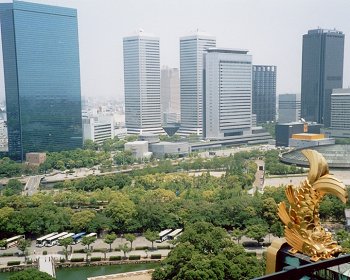
View from the top of Osaka Castle |
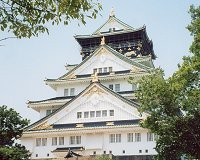 |
Originally built in 1586 by Toyotomi
Hideyoshi. It was one of the last strongholds defeated by Tokugawa
Ieyasu in his rise to supreme power see
History: Edo period.
Destroyed and rebuilt a number of times, the present buildings were
reconstructed in 1931. Impressively set on a hill surrounded by moats
the castle is best reached by taking the JR line from Osaka's main
railway station to Osaka-jo Koen-mae station. From here it's a pleasant
15 min walk away. |
Lake Biwa
The largest of Japan's lakes is surrounded
by places of scenic interest, many of which have been featured in
famous woodblock prints. Depending on where you go, the lake can be
reached in 30 mins by rail. Because of it's famous garden, Genkyu-en
see Gardens: Other Areas I went to the
old castle town of Hikone. The town was
once an important staging-point on the old Tokaido
Road and the 400 year old Hikone Castle
is the main attraction. |
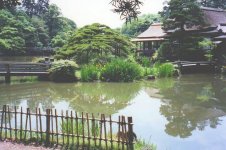 |
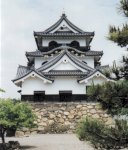 |
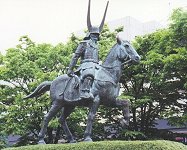 |
| Genkyu-en |
Hikone
Castle |
Welcoming statue |
 |
Uji
Just 11 miles south of Kyoto (40 mins by rail)
is the city of Uji. Built on the fast flowing Uji River, the town
is best know for the majestic Byodo-in,
see Gardens: Other Areas |
 |
Uji is also home to
the Tale of Genji Museum.
East of the river, walk through the peaceful streets to the modern
building which houses the exhibition.
Those interested in Japanese history will know of, if not have read,
the Tale of Genji written by Lady Murasaki Shikibu. |
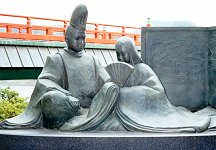 |
 |
It depicts the life of
nobles during the middle Heian period,
and is considered to be literature's first fictional work. The museum
has many displays which reflect the style of the period; clothes furniture
and art. The work is inextricably linked to Uji, as the last ten chapters
are set in this city. |
|


